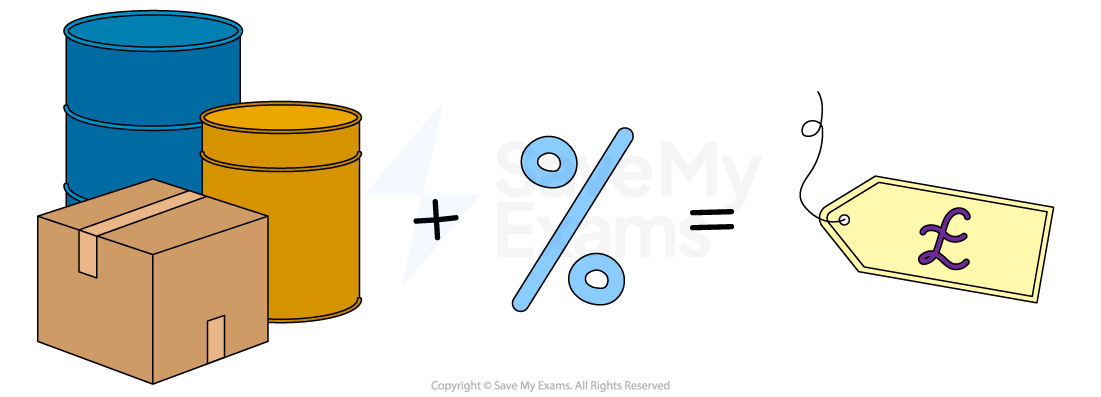Pricing Strategies (SQA National 5 Business Management): Revision Note
Exam code: X810 75
Cost-plus pricing
This involves calculating the total cost of producing a product and then adding a percentage mark-up for profit
E.g. if a product costs £10 to make and a 25% profit is added, the selling price is £12.50

Cost-plus pricing is most appropriate when a business has clear production costs, often manufacturers or retailers. and wants a guaranteed profit margin
Evaluating the use of cost-plus pricing
Advantages | Disadvantages |
|---|---|
|
|
Premium pricing
This involves setting prices higher than competitors to reflect superior quality, exclusivity or brand image
It is most appropriate for luxury, high-quality, or niche products where customers are willing to pay more for perceived value
E.g. Harris Tweed fabrics are sold at a higher price than standard textiles because they are handmade and high quality
Customers pay more for the craftsmanship and authenticity of the product
Evaluating the use of premium pricing
Advantages | Disadvantages |
|---|---|
|
|
Budget pricing
This strategy involves setting prices low to attract cost-conscious customers and increase sales volume
It is often used by discount retailers where customers are highly price-sensitive or when trying to attract new customers to the brand
E.g. Aldi keeps prices as low as possible to attract cost-conscious shoppers
It sells high volumes of products with small profit margins, offering affordable alternatives to branded goods
Evaluating the use of budget pricing
Advantages | Disadvantages |
|---|---|
|
|
Promotional pricing
This strategy involves temporarily lowering prices or offering special deals to encourage sales
E.g. “Buy one, get one free” or short-term discounts
It is often used to boost short-term sales, clear old stock, or attract new customers to a brand
E.g. Boots frequently runs short-term promotions such as “3 for 2” on cosmetics and skincare
These temporary price reductions attract new customers, increase basket size and help clear seasonal stock
Evaluating the use of promotional pricing
Advantages | Disadvantages |
|---|---|
|
|
Psychological pricing
This strategy involves setting prices that appear lower than they really are to make customers believe they are getting better value
It is often used in shops where customers make quick buying decisions and are influenced by small price differences
E.g. Greggs uses psychological pricing in its bakery stores, selling items such as sausage rolls for £1.99 rather than £2.00
The slightly lower figure makes the price appear better value to customers making quick, everyday purchases.
Evaluating the use of psychological pricing
Advantages | Disadvantages |
|---|---|
|
|
Penetration pricing
This strategy involves introducing a new product at a low initial price to attract customers quickly, gain market share and build loyalty before gradually raising the price
It is often used for new products entering competitive markets where customer awareness is low
E.g. STV Player+ launched its ad-free subscription service at a low introductory price to attract early users before raising the monthly fee
Evaluating the use of penetration pricing
Advantages | Disadvantages |
|---|---|
|
|
Price skimming
This strategy involves launching a new or innovative product at a high price to maximise profit from early adopters, then gradually lowering it as competition increases
It is often used for new technology or high-end products with strong customer interest and few competitors at launch
E.g. Sky used price skimming when introducing Sky Glass
It charged a high launch price for early adopters before reducing prices as competition and awareness increased
Evaluating the use of price skimming
Advantages | Disadvantages |
|---|---|
|
|
Examiner Tips and Tricks
Students often mix up penetration and skimming. Make sure you know the difference

Unlock more, it's free!
Did this page help you?